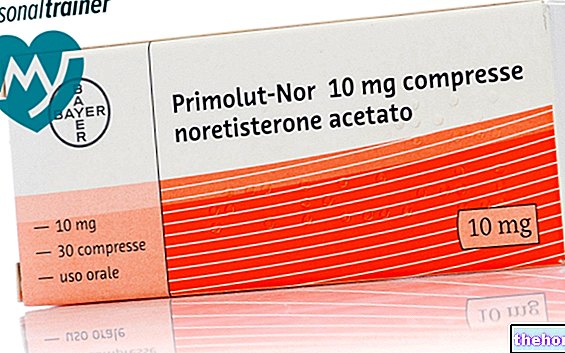Active ingredients: Promethazine
FARGANESSE 50 mg / 2 ml Solution for injection
Farganesse package inserts are available for pack sizes:- FARGANESSE 50 mg / 2 ml Solution for injection
- FARGANESSE® "25 mg coated tablets"
Why is Farganesse used? What is it for?
PHARMACOTHERAPEUTIC CATEGORY
Antihistamine for systemic use
THERAPEUTIC INDICATIONS
Symptomatic treatment in the acute phase of allergic states affecting the respiratory system of mucous membranes and skin - Allergic reactions from drugs and blood transfusions or blood products - Anaphylactic reactions - As a hypnotic sedative and for mild emotional disturbances - Anesthetic premedication and for the preparation of lytic cocktails.
Contraindications When Farganesse should not be used
Known or suspected pregnancy; known hypersensitivity to promethazine and to other antihistamines of similar chemical structure. The product is also contraindicated in premature babies, newborns, during lactation, in patients treated with monoamine oxidase inhibitors (MAOIs), undergoing therapy in lower respiratory tract diseases, including bronchial asthma. Due to its anticholinergic effects, do not use in case of glaucoma, prostatic hypertrophy, bladder neck obstruction, pyloric and duodenal stenosis or other tracts of the gastrointestinal and urogenital tract.
Parenterally, promethazine is contraindicated, also in comatose states and in intoxications from alcohol, barbiturates and other CNS depressants.
Do not accidentally inject Farganesse by intra-arterial or subcutaneous route.
Precautions for use What you need to know before taking Farganesse
At high doses, usually parenterally, extrapyramidal signs may appear. Therefore promethazine should not be used in children with signs suggestive of Reye's syndrome or other liver disease. Since promethazine depresses the activity of the bone marrow, the onset of leukopenia and agranulocytosis is facilitated by the association with other myelosuppressive drugs. Such an association should therefore be avoided.
Finally, promethazine should be used with caution in subjects with hepatic and cardiovascular diseases.
Farganesse vials contain sodium sulphite and potassium metabisulfite; these substances can cause allergic reactions and severe asthmatic attacks in sensitive subjects and particularly in asthmatics.
Interactions Which drugs or foods can modify the effect of Farganesse
The effects of antihistamines are accentuated by alcohol, hypnotics, sedatives and tranquilizers and other CNS depressant drugs.
Warnings It is important to know that:
At common therapeutic doses, antihistamines generally have very variable side effects from compound to compound and from subject to subject. Since the most frequent secondary effect is sedation which can manifest itself with drowsiness, those who may be driving vehicles or attending to operations that require integrity of the degree of vigilance must be warned of this.
Particular caution should be exercised in determining the dose in elderly subjects and children in consideration of their greater sensitivity to antihistamines.
The use of antihistamines can mask the early signs of ototoxicity of certain antibiotics.
The antiemetic effect of promethazine can mask the symptoms of an unrecognized disease and hinder diagnosis.
Keep out of reach of children.
Dose, Method and Time of Administration How to use Farganesse: Posology
Adults - Generally 25-50 mg (1-2 ml) by deep intramuscular injection or in case of emergency the same doses by slow intravenous injection (dilute 1 ml of Farganesse in 10 ml of water for injections).
The parenteral dose of 100 mg should not be exceeded.
Children - Use in children, particularly those between 6 months and 2 years of age, should be limited to occasional treatments or in emergency situations and carried out under direct medical supervision.
From 6 months to 1 year: 2.5 - 5 mg per day. via i.m. deep.
From 1 year to 5 years: 5-7.5 mg per day, i.m. deep.
From 5 to 10 years: 7.5-12.5 mg per day, i.m. deep.
An evening dose of 2.5-5 mg is sufficient to achieve a sedative hypnotic effect.
In the treatment of elderly patients the posology must be carefully established by the doctor who will have to evaluate a possible reduction of the dosages indicated above.
Overdose What to do if you have taken too much Farganesse
In case of overdosing, marked depressive or stimulating effects on the CNS are generally observed.
In children the dominant action is the exciting one with tremors, insomnia, excitement, athetosis, ataxia and convulsions.
The presence of dilated and fixed pupils, strongly reddened faces and fever, probably due to anticholinergic action, is also common. In the most severe states coma and cardiovascular collapse are observed
Side Effects What are the side effects of Farganesse
At common therapeutic doses, the most frequent side effects consist of sedation and drowsiness, asthenia, easy fatigue, difficulty in motor coordination, indistinct vision, diplopia, dizziness, ringing in the ears. However, signs of central excitation are possible, especially in children, with the onset of euphoria, nervousness, tremors and insomnia and, at high doses, convulsions. Extrapyramidal reactions are rare and occur with the use of high doses parenterally. . They are also frequent due to the anticholinergic effects of the preparation, dryness of the mouth, throat and nose, constipation, difficulty in urination and urinary retention, reduction and thickening of bronchial secretion accompanied by a sense of chest tightness and difficulty breathing.
The appearance of epigastric disorders, anorexia, nausea, vomiting and diarrhea can be avoided by administering antihistamines at mealtimes.
The product can cause photosensitization reactions and allergic manifestations up to anaphylactic shock.
At common doses of use, the product has no effects on the cardiovascular system. However, it is possible, especially in the elderly or in hypersensitive subjects, headache, hypotension. tachycardia and extrasystoles. Cases of thrombocytopenic purpura, leukopenia have been reported. agranulocytosis and obstructive jaundice.
In the event of any undesirable effects, other than those listed above, occurring during treatment, the patient is required to inform their doctor.
Compliance with the instructions contained in the package leaflet reduces the risk of undesirable effects. It is important to inform the doctor or pharmacist of the appearance of undesirable effects, even those not described in the package leaflet.
Expiry and Retention
WARNING: do not use the medicine after the expiry date indicated on the package.
This date refers to the intact product correctly stored.
COMPOSITION
Each vial contains:
Active ingredient: 56.40 mg promethazine hydrochloride equal to 50 mg base.
Excipients: potassium metabisulfite, anhydrous sodium sulphite, sodium citrate, water p.p.i. q.s. to 2 ml, citric acid to taste at pH 5.6-5.7.
PHARMACEUTICAL FORM AND CONTENT
Solution for injection: 5 ampoules of 50 mg / 2 ml
INTRAMUSCULAR AND INTRAMUSCULAR USE
Source Package Leaflet: AIFA (Italian Medicines Agency). Content published in January 2016. The information present may not be up-to-date.
To have access to the most up-to-date version, it is advisable to access the AIFA (Italian Medicines Agency) website. Disclaimer and useful information.
01.0 NAME OF THE MEDICINAL PRODUCT
FARGANESSE
02.0 QUALITATIVE AND QUANTITATIVE COMPOSITION
Each coated tablet contains:
Active ingredient: 28 mg promethazine hydrochloride equal to 25 mg base.
1 ampoule of solution for injection contains:
Active ingredient: promethazine hydrochloride 56.4 mg, equal to base 50 mg
03.0 PHARMACEUTICAL FORM
Coated tablets
ORAL USE
Injectable solution
INTRAMUSCULAR AND INTRAMUSCULAR USE
04.0 CLINICAL INFORMATION
04.1 Therapeutic indications
Symptomatic treatment of allergic states affecting the respiratory system, mucous membranes and skin. Allergic reactions from drugs and transfusions of blood or blood products. Diffuse itching. Anaphylactic reactions. Insect bites. As a hypnotic sedative and for minor emotional disturbances.
04.2 Posology and method of administration
Adults - Oral: 1-4 tablets in 24 hours, divided into several administrations with meals. Administer the higher dose in the evening.
Adults - Parenteral route: generally 25-50 mg (1-2 ml) by deep intramuscular injection or in case of emergency the same doses by slow intravenous injection (dilute 1 ml of Farganesse in 10 ml of water for injections).
The parenteral dose of 100 mg should not be exceeded.
Children - Parenteral: use in children, particularly those between 6 months and 2 years of age, should be limited to occasional treatments or in emergency situations and carried out under direct medical supervision.
From 6 months to 1 year: 2.5 - 5 mg per day, i.m. deep.
From 1 year to 5 years; 5- 7.5 mg per day, i.m. deep.
5 to 10 years; 7.5-12.5 mg per day, i.m. deep,
An evening dose of 2.5-5 mg is sufficient to achieve a sedative hypnotic effect.
In the treatment of elderly patients the posology must be carefully established by the doctor who will have to evaluate a possible reduction of the dosages indicated above.
04.3 Contraindications
Known or suspected pregnancy; known hypersensitivity to promethazine and to other antihistamines of similar chemical structure. The product is also contraindicated in children under two years of age, during lactation, in patients treated with monoamine oxidase inhibitors (MAOIs), undergoing therapy in lower respiratory tract diseases, including bronchial asthma.
Due to its anticholinergic effects, do not use in case of glaucoma, prostatic hypertrophy, bladder neck obstruction, pyloric and duodenal stenosis or other tracts of the gastrointestinal and urogenital tract.
04.4 Special warnings and appropriate precautions for use
At common therapeutic doses, antihistamines generally have very variable side effects from compound to compound and from subject to subject.
Particular caution should be exercised in determining the dose in elderly subjects and children in consideration of their greater sensitivity to antihistamines.
The effects of antihistamines are accentuated by alcohol, hypnotics, sedatives and tranquilizers, and other CNS depressant drugs. The use of antihistamines can mask the early signs of ototoxicity of certain antibiotics.
The antiemetic effect of promethazine can mask the symptoms of an unrecognized disease and hinder diagnosis.
At high doses, usually parenterally, extrapyramidal signs are possible, therefore promethazine should not be used in children with signs suggestive of Reye's syndrome or other liver disease.
Finally, promethazine should be used with caution in subjects with hepatic and cardiovascular diseases.
Since promethazine depresses the activity of the bone marrow, the onset of leukopenia and agranulocytosis is facilitated by the association with other myelosuppressive drugs. Such an association should therefore be avoided.
KEEP OUT OF REACH OF CHILDREN
04.5 Interactions with other medicinal products and other forms of interaction
The effects of antihistamines are accentuated by alcohol, hypnotics, sedatives and tranquilizers and other CNS depressant drugs.
04.6 Pregnancy and lactation
During pregnancy and breastfeeding, the drug should only be administered if clearly needed.
04.7 Effects on ability to drive and use machines
Since the most frequent secondary effect is sedation which can manifest itself with drowsiness, those who may be driving vehicles or attending to operations that require integrity of the degree of vigilance must be warned of this.
04.8 Undesirable effects
At common therapeutic doses, the most frequent side effects consist of sedation and drowsiness, asthenia, easy fatigue, difficulty in motor coordination, indistinct vision, diplopia, dizziness, ringing in the ears. However, signs of central excitation are possible, especially in children, with the onset of euphoria, nervousness, tremors and insomnia and, at other doses, convulsions. Extrapyramidal reactions are rare and occur with the use of high doses parenterally. . They are also frequent due to the anticholinergic effects of the preparation, dryness of the mouth, throat and nose, constipation, difficulty in urination and urinary retention, reduction and thickening of bronchial secretion accompanied by a sense of chest tightness and difficulty breathing.
The appearance of epigastric disorders, anorexia, nausea, vomiting and diarrhea can be avoided by administering antihistamines at mealtimes.
The product can cause photosensitization reactions and allergic manifestations up to anaphylactic shock.
At common doses of use, the product does not show effects on the cardiovascular system. However, it is possible, especially in the elderly or in hypersensitive subjects or with the use of parenteral promethazine, headache, hypotension, tachycardia and extrasystoles. Cases of thrombocytopenic purpura, leukopenia, agranulocytosis and obstructive jaundice have been reported.
04.9 Overdose
In case of overdosing, marked depressive or stimulating effects on the CNS are generally observed. In children the dominant action is the exciting one with tremors, insomnia, excitement, athetosis, ataxia and convulsions. The presence of dilated and fixed pupils, strongly reddened faces and fever, probably due to anticholinergic action, is also common. coma and cardiovascular collapse.
05.0 PHARMACOLOGICAL PROPERTIES
05.1 Pharmacodynamic properties
Farganesse is a drug derived from phenothiazine with a powerful and prolonged antihistamine action, anti-emetic, anti-exudative, sedative and hypnotic activity.
05.2 "Pharmacokinetic properties
H1 antagonists are well absorbed from the gastrointestinal tract. After oral administration, peak plasma concentrations are reached in 2-3 hours and the duration of activity is approximately 4-6 hours.
05.3 Preclinical safety data
H1 antagonists do not possess carcinogenic activity
06.0 PHARMACEUTICAL INFORMATION
06.1 Excipients
Coated tablets:
Lactose, starch, polyvinylpyrrolidone, sodium carboxymethylcellulose, magnesium stearate, sandracca, rosin, talc, magnesium carbonate, titanium dioxide, E 172, gum arabic, carnauba wax, sucrose.
Injectable solution:
Potassium metabisulphite, anhydrous sodium sulphite, sodium citrate, citric acid, water p.p.i.
06.2 Incompatibility
They are not known
06.3 Period of validity
Coated tablets: 48 months.
Solution for injection: 48 months
06.4 Special precautions for storage
Keep away from light.
06.5 Nature of the immediate packaging and contents of the package
Tablets: blister in coupled aluminum / PVDC and PVC / PVDC: 20 coated tablets of 25 mg
Vials: neutral glass vial with safety pre-break: 5 vials of 50 mg / 2 ml.
06.6 Instructions for use and handling
07.0 MARKETING AUTHORIZATION HOLDER
ANSERIS FARMA SRL - Piazza Duca D "Aosta 10 - 20144 Milan
08.0 MARKETING AUTHORIZATION NUMBER
"25 mg coated tablets" 20 tablets - AIC 026964015
"50 mg / 2 ml solution for injection" 5 ampoules - AIC 026964039
09.0 DATE OF FIRST AUTHORIZATION OR RENEWAL OF THE AUTHORIZATION
May 31, 2005




























